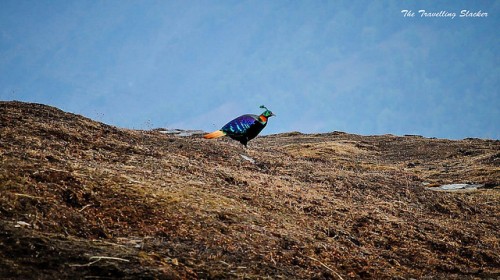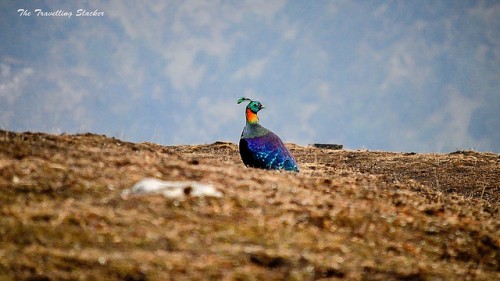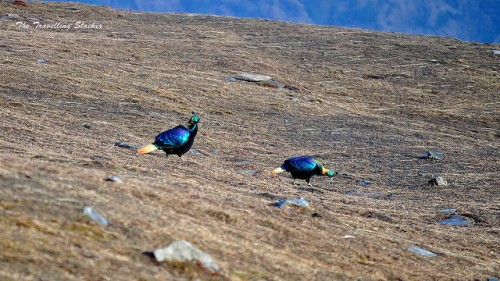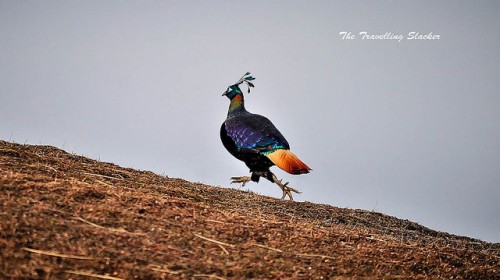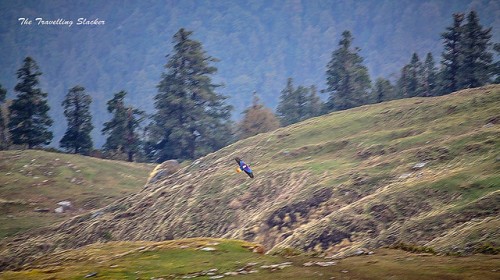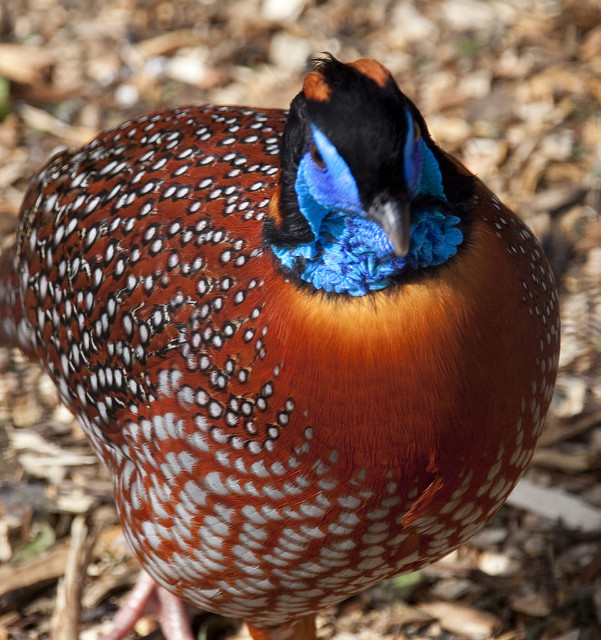It was a leisurely trip to Uttarakhand’s Chopta village and Tungnath, that brought the Travelling Slacker face to face with the state bird – the striking Himalyan Monal. Surprised to find this colourful bird fearlessly flying around, the blogger clicked furiously to ensure the memory of this chance rendezvous was preserved for everyone to see.
Himalayan Monal (Lophophorus impejanus) is a stunning, colourful bird of the pheasant family. At first glance it may appear to be a peacock that forgot its trailing tail feathers. The same irridiscent purple blue green colours of the body plumes is strikingly similar. But unlike the national bird, monals have a distinct short chestnut brown tail.
The blogger writes, “Originally I did not have much clue about the bird. I was there in Chopta for the rhododendrons rather than the Monal. But the lodge owner mentioned the bird and he even mentioned musk deer although that was nowhere to be seen.”
He was luckier with the bird. On the evening of the first day of their trip, he saw one running around but with mist around, it was difficult to get a shot.
Also known as the impeyan monal, impeyan pheasant, and danphe, the monal is found in the Himalayas from eastern Afghanistan to Bhutan, northeast India and southern Tibet. In Uttarakhand and Himachal Pradesh the birds are easy to spot, especially during March-April, their breeding season.
The blogger recalls,
“The morning was better and we were considering a climb to Chandrashila but the first thing we noticed en route was another Monal. The light was much better and we summoned every guerrilla tactics learnt from the movies to get as close to it as possible without alarming it.”
“It was not easy as it was just an open meadow without anything to hide behind. I clicked pictures after every step and the images become gradually bigger and clearer till it reached a point where I could publish them without embarrassing myself,” writes the Traveling Slacker.
Like many of the pheasants, quails and partridges in the Phasianidae family, the Himalayan monal has very strong legs and a long, curved beak which together enable it to dig into the hard soil of the mountains to uncover seeds, tubers, shoots, berries, and insects. This method of foraging leaves conspicuous areas of turned over soil up to 25 cm deep on hillsides.
The bird uses several different call types to express meaning to its mate, other birds in its foraging group, or intruding birds. Male monals are good fathers too, guarding the female incubating the eggs for all the 27 days of the incubation period and protecting the fledgling from predators.
During the summer months, the Himalayan monal ventures above the tree-line to wander on the grassy slopes, but during winter it is found in coniferous and mixed forests with a high proportion of rhododendrons and bamboo, where it shelters from the weather.
The IUCN marks the bird as Least Concern with no visible decline of the population. With the status of being the National Bird of India’s neighbouring state Nepal, the species has also found additional attention and protection.
The images were originally posted here. Thanks to the Travelling Slacker, for sharing these images with us. Have you seen this bird? What was the experience like? Do share.
More Related Stories,
Western Tragopan: Vulnerable State Bird of Himachal Pradesh
Himalayan Monal to Get Advanced Breeding Centre
Indian Birds Need Help to Combat Climate Change
Additional information from Arkive


